 There may still be some snow on the ground, but the first lambs of the season are here! As we welcome the most recent additions (twin sisters) to the flock, we’re also reflecting on the breed as a whole since this year marks a major milestone for Colonial Williamsburg’s Rare Breeds Program.
There may still be some snow on the ground, but the first lambs of the season are here! As we welcome the most recent additions (twin sisters) to the flock, we’re also reflecting on the breed as a whole since this year marks a major milestone for Colonial Williamsburg’s Rare Breeds Program.
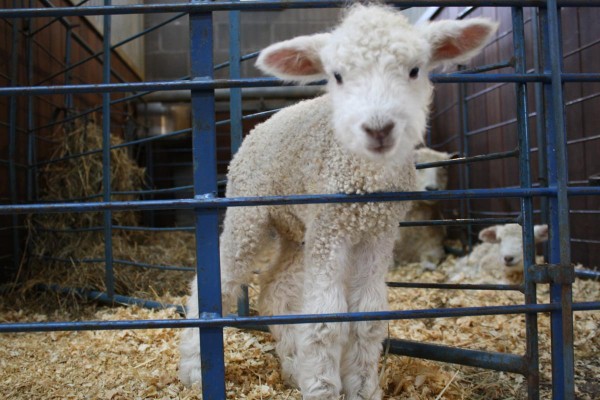 As I zip up my jacket and trudge through the slush leading up to the stables, the irony isn’t lost on me. March is supposed to come in like a lion and go out like a lamb, right? Well, this interview will add another unexpected twist to the age-old saying. The calendar and our thermometers may agree it’s still winter, but the bleating cries from our lambs prove spring has arrived early in the colonial capital.
As I zip up my jacket and trudge through the slush leading up to the stables, the irony isn’t lost on me. March is supposed to come in like a lion and go out like a lamb, right? Well, this interview will add another unexpected twist to the age-old saying. The calendar and our thermometers may agree it’s still winter, but the bleating cries from our lambs prove spring has arrived early in the colonial capital.
 The next couple of weeks will be busy for our Coach and Livestock crew as well as our Leicester (pronounced Les-ter) Longwool Sheep. There are 19 pregnant ewes, spread out in pastures at Wetherburn’s Tavern, behind Christiana Campbell’s, and down the street and across from the Peyton Randolph House—and they could all go into labor any day and at any hour. Program supervisor Elaine Shirley tells me she’s actually surprised we haven’t had more lambing by now. The first two (called 1501 and 1502) were born last Friday and Elaine has been busy bottle feeding the second one since her mother isn’t producing enough milk for the pair.
The next couple of weeks will be busy for our Coach and Livestock crew as well as our Leicester (pronounced Les-ter) Longwool Sheep. There are 19 pregnant ewes, spread out in pastures at Wetherburn’s Tavern, behind Christiana Campbell’s, and down the street and across from the Peyton Randolph House—and they could all go into labor any day and at any hour. Program supervisor Elaine Shirley tells me she’s actually surprised we haven’t had more lambing by now. The first two (called 1501 and 1502) were born last Friday and Elaine has been busy bottle feeding the second one since her mother isn’t producing enough milk for the pair.
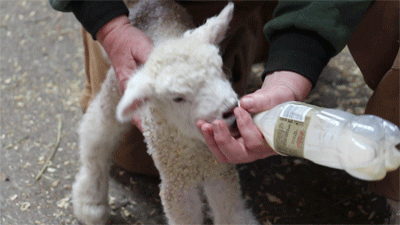
It’s standard procedure for lambs to be brought into the stables after they’re born and they aren’t released back into the pastures until they comply with our “lamb checklist.” Items include ear tags, a series of shots, tail docking, and an overall health check. The ewes are also monitored to make sure they haven’t retained any part of the placenta and the lambs must prove they know how to nurse on both sides. Some can be returned back to pasture in just a couple days but these little ones will spend extra time in their stall given the fact that one is on the bottle and that their mama is older. The unpredictable weather is also delaying their release.
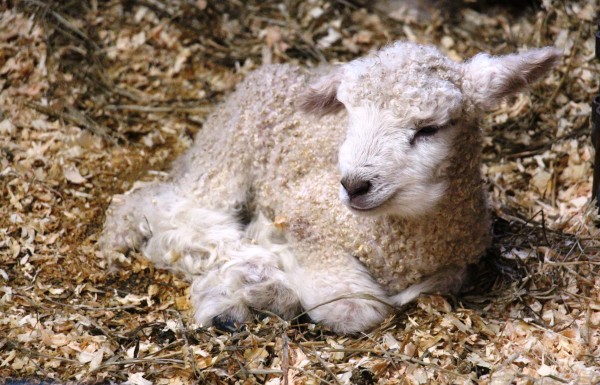 While it’s easy to get wrapped up in the undeniable adorableness of these guys, it’s even more rewarding to know that each lamb is helping to preserve this 18th-century breed. The Leicester Longwool Sheep were introduced to us 25 years ago and on this anniversary, we find it important to provide a little background into how this particular breed ended up in Williamsburg and part of our Rare Breeds Program.
While it’s easy to get wrapped up in the undeniable adorableness of these guys, it’s even more rewarding to know that each lamb is helping to preserve this 18th-century breed. The Leicester Longwool Sheep were introduced to us 25 years ago and on this anniversary, we find it important to provide a little background into how this particular breed ended up in Williamsburg and part of our Rare Breeds Program.
 George Washington is known as a politician, a statesman, and a soldier. What many don’t know is that he was also a passionate farmer with a particular interest in sheep. In fact, Washington raised 600-900 heads every year at Mount Vernon. During the 18th century, Leicester Longwool Sheep were mentioned specifically in several British publications and in her research, Elaine decided they would be the perfect addition to our program. But when she tried to locate them in the United States, she ran into one major problem. It appeared they had died out in America, likely around 1920.
George Washington is known as a politician, a statesman, and a soldier. What many don’t know is that he was also a passionate farmer with a particular interest in sheep. In fact, Washington raised 600-900 heads every year at Mount Vernon. During the 18th century, Leicester Longwool Sheep were mentioned specifically in several British publications and in her research, Elaine decided they would be the perfect addition to our program. But when she tried to locate them in the United States, she ran into one major problem. It appeared they had died out in America, likely around 1920.
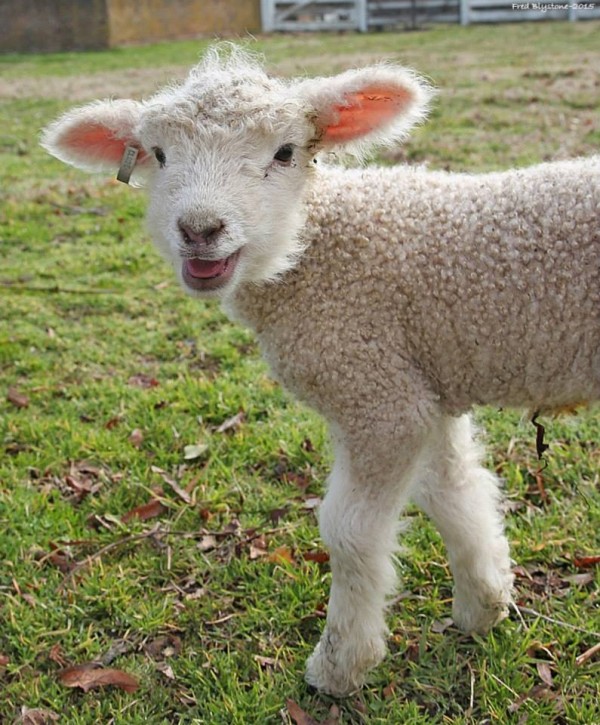 That’s when Coach and Livestock Director Richard Nicoll reached out to Ivan Heazlewood, a third-generation breeder in Australia, who personally took on the task of organizing a flock for Colonial Williamsburg. And in February of 1990, eight ewes, one ram, and six lambs arrived. What started as a flock of 15 has grown to anywhere between 35 and 50 (depending on the time of year). Since its inception, our program has helped other breeders by providing “satellite” flocks. Essentially, we loan one of our rams and three of our ewes to other experienced sheep farmers interested in preserving the breed. Those farmers are then allowed to keep half of the resulting lambs. Due to this combined effort geared toward preservation, as of last year, there are now 100 breeders of Leicesters in the country and 800-1,000 sheep. Elaine summed up the magnitude of this statistic when she said, “It’s a great example of how our Rare Breeds Program… and one organization like Colonial Williamsburg can really make a difference.”
That’s when Coach and Livestock Director Richard Nicoll reached out to Ivan Heazlewood, a third-generation breeder in Australia, who personally took on the task of organizing a flock for Colonial Williamsburg. And in February of 1990, eight ewes, one ram, and six lambs arrived. What started as a flock of 15 has grown to anywhere between 35 and 50 (depending on the time of year). Since its inception, our program has helped other breeders by providing “satellite” flocks. Essentially, we loan one of our rams and three of our ewes to other experienced sheep farmers interested in preserving the breed. Those farmers are then allowed to keep half of the resulting lambs. Due to this combined effort geared toward preservation, as of last year, there are now 100 breeders of Leicesters in the country and 800-1,000 sheep. Elaine summed up the magnitude of this statistic when she said, “It’s a great example of how our Rare Breeds Program… and one organization like Colonial Williamsburg can really make a difference.”
 We sell both our sheep and their wool. Leicesters produce a nice, long, shiny wool with a well-defined crimp to it (shown above). It’s primarily sold to handspinners, felters, and weavers. Finished yarn is also available to the public for purchase in the Historic Area at the Prentis Store.
We sell both our sheep and their wool. Leicesters produce a nice, long, shiny wool with a well-defined crimp to it (shown above). It’s primarily sold to handspinners, felters, and weavers. Finished yarn is also available to the public for purchase in the Historic Area at the Prentis Store.
We mentioned the lambs we met are twins. We’re told for this particular breed, it isn’t uncommon for every other birth to result in multiples. And if history repeats itself, we may even get another set of triplets this year. While their official names are 1501 and 1502, we thought it might be fun to refer to them by names that are a little more personable. We think this particular one looks like a “Lucy.” Do you agree? Be sure to leave us a comment, below!
UPDATE: Some of the lambs have returned to the pasture to frolic. We spotted three in the Custis Pasture at the corner of Nassau and Francis Streets (diagonal from the Art Museums). Some of you did, too. Thank you Fred Blystone for sharing these amazing shots of our lambs in action!
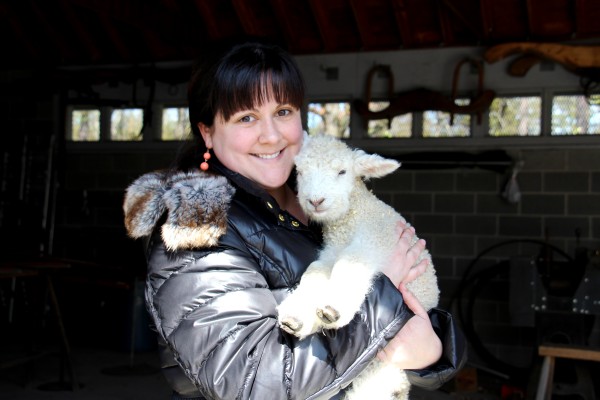
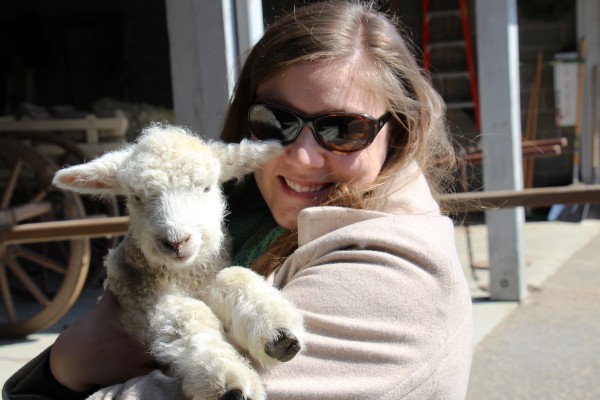
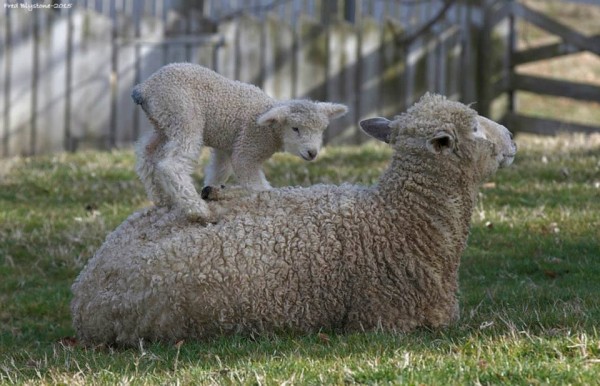
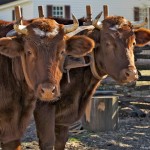
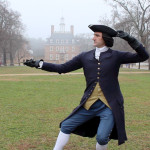
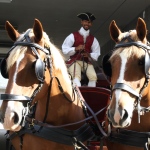
Lamb Chop, Sheplea, Ramsey.
I Love
How about Wynken, Blynken and Nod (also sometimes spelled as Winkin, Blinkin and Nod)?
Liberty, Belle, and Freedom
Name these cuties - juniper, violet and rosie
They are so cute…how about Winkin, Blinkin and Nod.
Iny, Miny, Miney and daddy might bring some Moe!
How about Little, Bo and Peep.
Oh my goodness … Cute much??
Thelma and Louise!
Lambs are so adorable. These are my favorite pictures and hope to get to see them in person one day. I think Willa and Mary would be perfect names for them!
No; not Lucy. Abigail is considerably more appropriate.
She is so beautiful and I agree “Lucy” would be a good name for this darling girl!! I am so proud and happy that Colonial Williamsburg is so successful with the “Rare Breeds” program. I will be making my 3rd trip to Colonial Williamsburg in 2 months and I can’t wait to visit with the sheep and the new oxen Thank you so much for posting these wonderful photos - baby lambs are too precious for words!
Jan - we can’t wait to see you again! The lambs should be out in the pastures by the end of the month. With 19 more expecting mamas (and half of them possible producing twins)-I think it’s going to be a fun spring in and around the Historic Area.
How about Will and Mary?
That’s Willa and Mary!
Great one, Angela!
I like Lucy and Ethel, as well!
I thought the very same thing: Lucy and Ethel!
Debbie, thank you for sharing. It looks like great minds think alike!
Lucy and Ethel is the first thing that also popped into my mind! 🙂
I think we have a winner!
How about Luna for the other lamb?
I love the name Luna. Of course I picked Lucy because I’m a sucker for alliteration!
Love this! We got married in Williamsburg and have twin daughters. Can’t wait to take them to visit!
Ariana - how sweet! Your girls should be able to see all the lambs in a couple of weeks when they return to the pastures to frolic. The babies usually stay with their mothers for two to three months!
Yay! We will definitely make the trip! Our twins are Penny (Penelope) and Annabel if you need more name suggestions 🙂
Patsy and Polly…just like Jefferson’s nicknames for his two surviving daughters!
Love the suggestions, Amy!
1501-Lucy
1502-Ethel
Haha!! Janet - I think your suggestion is my favorite so far!
So cute!! I vote for Lucy and Lisa, as the names for the lamb twins.
Thank you for responding, Debbie. What a cute suggestion!